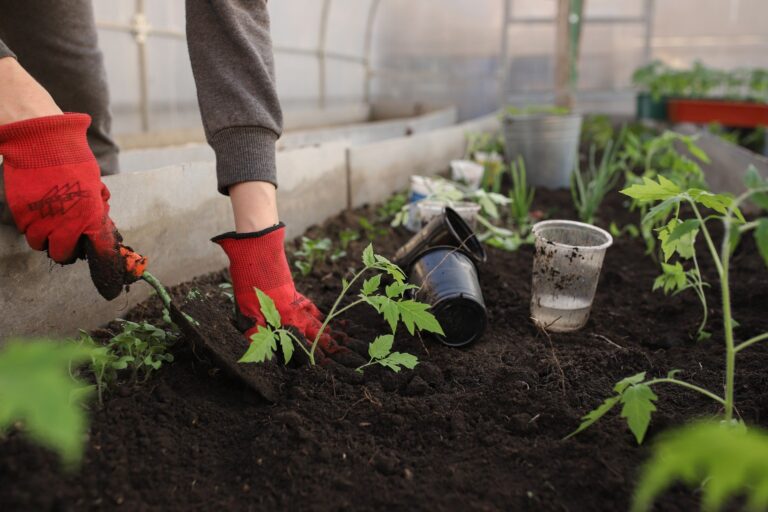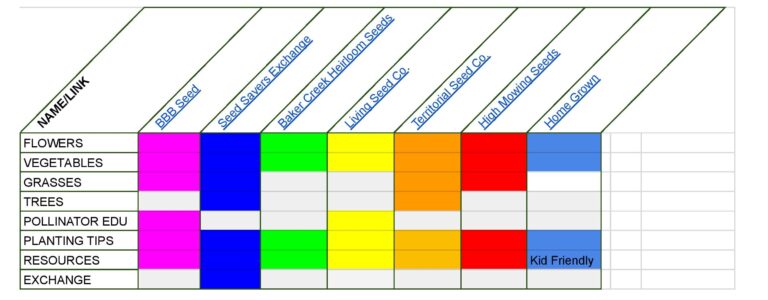4 Secrets to Overwintering Your Cherished Patio Garden
These 4 secrets to overwintering your cherished patio garden plants are important for many reasons. Preparing your patio garden for winter protects your plants, your gardening containers, and extends the growing season for hardy plants.
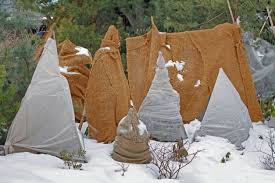
4 Secrets to Overwintering Small Patio Garden Containers
Annuals are pulled up or out of containers and sent to the compost pile. Many perennials, shrubs, or trees in containers need to be protected from the cold. Overwintering your patio garden is easy with the following three ways. These ways protect small and large patio garden containers. Keep in mind the cold can crack some pots. It is important to do this before a hard freeze:
- First, you can bury the entire pot in the ground. The soil surrounding the pot will keep the roots of your plant as warm as the surrounding soil. You can add mulch for an added “blanket”. The drawback is that you must scrub the pots clean in the spring. You may also get stains or discoloration on the pots depending on the type of pot. Also, it is not easy to dig holes for all of your pots.
- Overwintering geraniums gives you a faster splash of color in the spring. Protect your patio garden containers by moving the pots into an unheated shed, garage, basement, or cold frame. My grandmother always moved her pots (even the bigger ones with grumbling from my uncles) to her garage and never lost a plant. Make sure you check the moisture level of the plants every month or so. Do not overwater since you could cause root rot.
- Another way is to put the pots together in a group, in a protected location. Protection from the wind is the main priority. If the area has morning sunlight, that would be beneficial. Overwintering begonias in this way with straw, compost, shredded leaves, bark mulch, evergreen boughs, or an old thermal blanket, makes them happy come spring.
- Finally, you can group the pots in a cold frame. Alternatively, you can bunch the pots together, surround them with wire or a box and put any of the insulators, mentioned above, between the inside of the box and the pots.
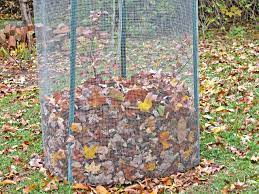
Large Patio Garden Containers
Some patio containers are too large to move. If you do not have your large pots on coasters to move to the garage, you can wrap the pots in bubble wrap. Or, use the method mentioned above with a box or wire surrounding the entire pot and straw or mulch used as an insulator. You can even use packing peanuts, old newspapers, or burlap bags as insulators. However, the peanuts may cause a mess in the spring. Check the moisture level in the pots periodically because dry soil freezes faster than wet soil. Using bubble wrap or some type of insulation may also prevent your garden containers from freezing and cracking.
USDA Hardiness Zones
Information provided by Penn State University shows that the USDA Hardiness Zones are based on plants in the ground. However, they also state that plants in patio garden containers do not have the same protection. The roots of plants in containers are the same temperature as the winter air. To be safe, they suggest going 2 zones colder for plants in garden containers. That is why overwintering patio garden containers is so important. You need to protect the plant roots even when they are in a container. If you would like a free copy of the USDA Hardiness Zone map, leave a comment below.
How To Make A Cold Frame for Overwintering
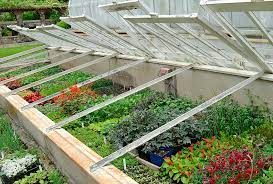
Cold frames protect potted plants and extend the growing season in more frigid environments. It is easy to build a cold frame if you visit a scrapyard. You need old windows or a shower door for the top. The cold frame is made of wood, bricks, blocks, or even sheets of aluminum siding with styrofoam as an insulator. The windows or shower door will determine the size of your box and act as the roof or skylight for the top.
Building a Coldframe
- Make the 4 walls into a box slightly smaller than your windows or door.
- Slope the top toward the midday sun. This gives maximum light and warmth.
- You can position the box directly onto the soil and it is best in a protected location against a fence or wall.
- Add strong hingles to the windows or door and include a handle if needed.
- If you are using wood, 4 corner posts will make it sturdy or you can make right triangles out of blocks of wood and screw into the corners.
- It is best to make two battens to use to prop up the windows or door. You make grooves in the wood or add some type of anchor on the inside of the side walls to prop up the battens so the battens keep the windows open all the way or just a crack. This prevents your cold frame from getting too hot in the spring.
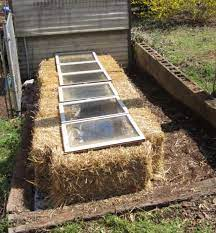
Uses for Cold Frames
Grow hardy vegetables through the winter in a cold frame. They can also extend the growing season by allowing you to plant seedlings earlier in the spring. The battens allow you to harden off young plants before moving them into their permanent home in the garden. As mentioned above, cold frames are great for patio garden containers, to protect them from freezing in the winter.
Overwintering your patio garden containers is easy. Protect your pots from frigid winter winds by insulating them with garden mulch or compost. Take smaller pots into your garage, shed, or greenhouse. Do you protect your patio garden containers in the winter? Let me know in the comments below. Also, don’t forget to ask for a free copy of the USDA Hardiness Zone map pdf.
